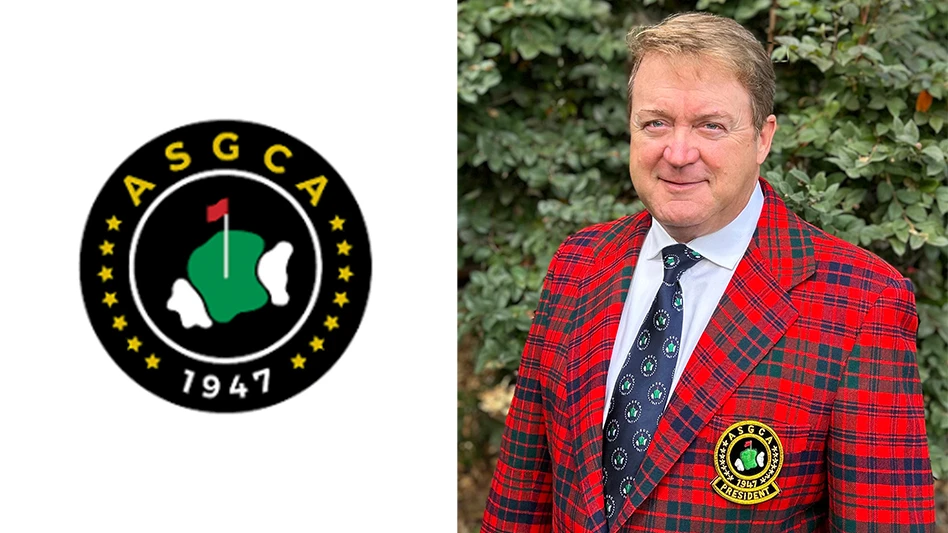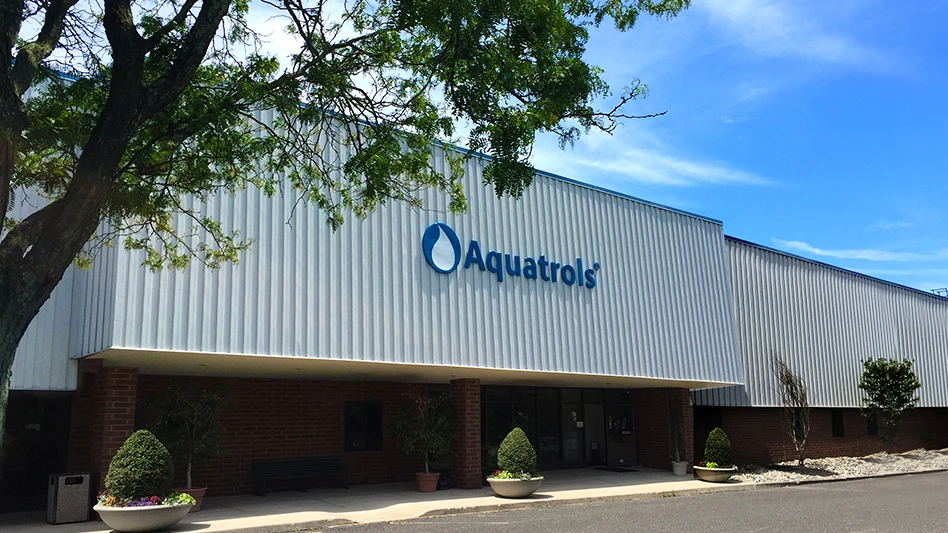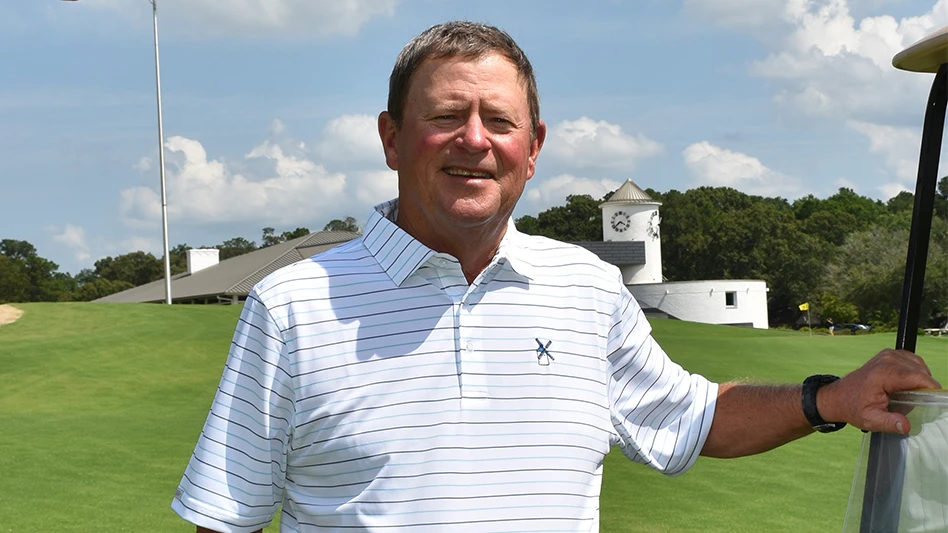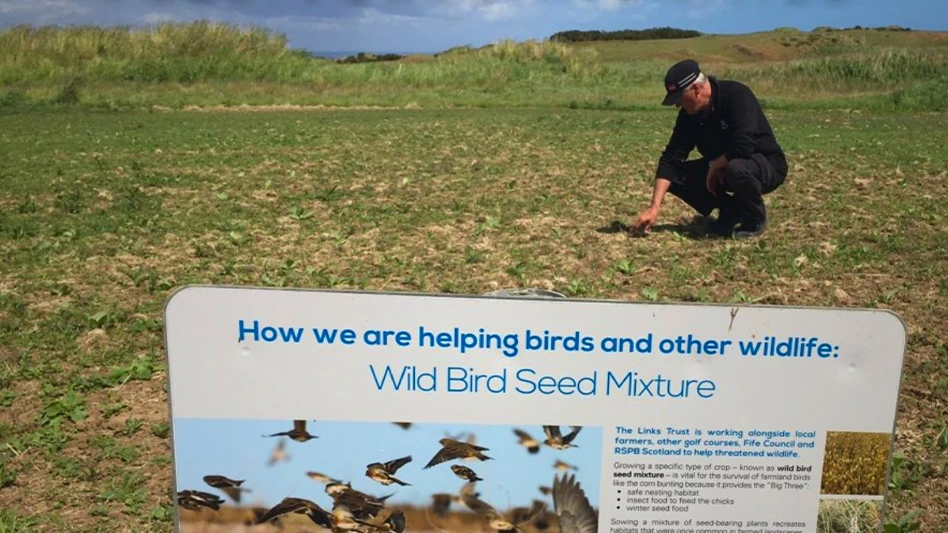How did you get into turfgrass research?
The summer before I was admitted into dental school at the University of Iowa, I started to work at a golf course as a summer job in my hometown of Charles City, Iowa. And, as any turf person will tell you, it’s almost an addiction. I call my students turf junkies because once it gets in your blood – if it’s going to be something of significance for you – you just can’t let it go. So I deferred away from dental school and went into turfgrass management at Iowa State and earned an undergraduate degree.
|
|
Getting closer to the end of my Ph.D. work and watching Dick Schmidt, my major professor, and what he was doing and what he had to go through as a faculty member at a good institution didn’t move me much. I didn’t want to have all the distractions of committees and classes. I wanted a research position. I convinced myself that I wanted to go to work for an agriculture chemical company that was producing a turf product line.
About six months before I finished, I began talking to others who were young faculty members who gave me a perspective about academic life that I hadn’t realized prior to those conversations. Then I narrowed my choice to Penn State University because of the reputation of its turf program. I said, “If an academic position ever became open, I would like to be considered.” So while on hold, my predecessor, Tom Perkins, was looking to do what I thought I wanted to do, which was to go to an agriculture chemical company, and he did. That left an opening at Penn State. I was called and asked if I would interview, and I did. I liked what I saw and liked the turf faculty and fortunately was offered the position. I reported for duty as an assistant professor in October of 1970 and have been there ever since.
What are some universities on par with Penn State?
That’s a hard one because all the land grant universities have good turf programs to some degree. That might be a single faculty member, or it could be a half dozen, or it could be more. If I was a high-school kid interested in turf, living in North Carolina, I would go to N.C. State because they have a really good program there. The same could be said of New Jersey – Rutgers has a good program. So does Ohio State and Michigan State. If I was growing up in Iowa, I would go to Iowa State, which has a good program.
|
|
We launched the first undergraduate degree program in which a student could get a B.S. in turfgrass science in 1992. There weren’t any degree programs before that. Now there are four: Ohio State, Rutgers and Georgia followed us.
And for the past few years, we have had a world campus program, which is all on the Web. We have students from all over the world who take our turfgrass management programs on the computer.
We just received approval from the faculty senate to offer our four-year degree program online to students all over the world. A student anywhere in the world can earn a four-year baccalaureate degree in turfgrass science from Penn State on the Internet.
Has the number of students in the turfgrass program increased throughout the years? If so, why?
We’ve seen an increase, which has to do with the growth of the turfgrass industry and its diversity. You can say X percent of our undergraduates are going to become golf course superintendents, landscape contractors or athletic field managers. That dynamic tends to shift as students have interest in the job market. For example, the largest growth area for undergraduates is managing sports fields; and consequently, on a percentage basis, the largest increase in our undergraduate population who majored in turf has an interest in managing athletic fields, not golf courses. So the turfgrass industry at large is continuing to grow.
Is there a need for more students in the research field?
We need more talented academic students capable of graduate work. I don’t mean that in a demeaning way about the students we have. We have some excellent students, but they want to be turf managing professionals. They don’t have an interest in research or graduate school. At most, we have 2 percent of the total undergraduate population that has an interest in graduate school. And that’s starting to bring about some problems as we look at trying to hire and fill positions like mine. Where are the young ones going to come from? There’s a potential shortfall.
Do you see problems because of that during the next 10 to 15 years?
Yes. There’s a fairly significant number of us old-timers who are going to retire, and it’s going to be a challenge to see how the void gets filled, not only because of the numbers, but also because of the diversity of research problems that need to be solved, which is a reflection of the industry’s growth. Twenty-five to 30 years ago when I started, the Penn State research program was 99 percent oriented to the golf course, as was everybody else; but that isn’t true anymore. There are research programs that deal with the environment, homeowner problems and athletic field problems. I placed an undergrad at Jefferson Memorial Park, a 650-acre cemetery, in Pittsburgh. Talk about another unique set of problems. So anywhere you see turf that needs to be maintained, a whole plethora of new problems that need to be researched emerges.
Would marketing the research field help?
We’ve talked about that, recruitment and going to national agronomy society meetings a lot. It’s competitive marketing. Universities are offering financially attractive opportunities for young people to go to graduate school. We’re challenged because of the attractiveness of the positions that young people have. It’s not so bad starting at $35,000 a year, and in five years, a young person has earned a pretty good chunk of change that he wouldn’t have had if he would have stayed in graduate school. It’s tough. And the other aspect of that is the better ones academically are the ones who go out the door with the highest pay without going to graduate school.
Who’s funded most of the research you’ve done during your career?
The hard money universities have, particularly colleges that have agricultural sciences, is limited. We’re fortunate the turfgrass industry is well supported. For example, the turfgrass council in Pennsylvania, through its sponsorships with us of trade shows and conferences, generates substantial funds for scholarships and research projects. And our industry partners, all the Syngentas and Bayers of the world, are very supportive of our research programs. So the soft money side, which is the side I just mentioned, has been our savior. If we hadn’t had the soft money support, we wouldn’t have come close to providing the solutions to all the problems we hopefully have been able to provide our clientele.
Do you predict changes with funding during the next 10 to 15 years?
Cooperators are pressured more and more to fund this and that. Institutionally, it’s going to get smaller because the colleges of agriculture sciences are strapped. Universities are strapped and victimized by having to lobby for state appropriations and are being played like a pinball by legislators who want us to raise tuition, and students are caught in the middle. I’ve watched this for 40 years. It’s the same old game. It’s a gloomy scenario on the hard money side.
However, having said that, I submitted a research proposal to the Department of the Interior, specifically the U.S. geological survey, for funding on initiating our water quality research program. I received a three-year contract from the Department of the Interior. So here’s a federal-level funding agency that stepped to the plate and helped out immeasurably. There are funds out there, but for turf professors to get a piece of that action, they have to be very innovative.
A lot of states are challenged right now, but there are initiatives that generate funds that are consistent in nature. For example, there’s a fund-raising effort called the Pennsylvania Turfgrass Council Research Trust. The idea is to, through donations and capital contributions, develop a corpus of a significant seven-digit number from which the interest generated by the fund can provide sustainable support to the turf program rather than living from year to year. However, the trust is designed to allow the corpus to be dipped into if money is needed for a major project or problem. But that would have to be an emergency. They are both smart, long-range ideas to sustain funding. Having a corpus provides a baseline need, and then it can be added to year by year so that we can keep up with inflation.
What is the most interesting research project you’ve worked on?
It would be the environmental water quality project, the one most people know me for and hopefully will remember me for. We started in 1983 developing a runoff facility that could evaluate the fate and movement of fertilizers and pesticides in water, both off and downward from the site. The project was partially funded by the university – that was the hard money at work. It also was funded by the turf industry – the turfgrass council, lawn care companies, golf courses. In all, the project required a fairly sizable amount of money to get the facility built, maintained, and to fund the graduate students.
We believe the facility has made a significant and lasting contribution to what we know in terms of turf and the impact turf has on water quality. What we found was the opposite of what was being talked about in the late ’70s, which was that golf courses were toxic waste dumps and people who tried to have a nice lawn were polluting the world. We put a reverse spin on that and generated the data to prove that if you don’t have some turf in your suburban ecosystem, you have a big problem because it’s the buffer against many of the negative environmental inputs that exist when development occurs. We knew it all along, but there weren’t any numbers to back us up. We were condemned by a doom-and-gloom media as the bad guy.
We designed the facility to give us the worst-case scenario. When the irrigation system is on, the runoff is six inches an hour. That occurrence of a storm isn’t on the chart unless you’re in hurricane territory. We originally designed the facility to handle a 125-year storm, which is three inches an hour. What we discovered early on was that it’s difficult on an established turf site to get the water to run off, so we had to re-retrofit our irrigation system to increase it to six inches an hour so we could get samples.
When was the project completed?
It will never be completed. There’s always something new that’s developed in the marketplace. Now it’s lacking a graduate student, and that is primarily because I’m retiring, but somebody will pick it up. It’s a viable facility that will remain operative long after you and I are gone.
What’s the greatest research finding during your career?
The one I just mentioned is one of them. It shows how favorable turfgrass systems are to the environment. And there have been a lot of advances in the improvement of turfgrass varieties, such as the fact that we can now seed Bermudagrasses and zoysiagrasses and some of these warm season species.
The whole arena of plant growth regulators, which have now been accepted by a lot of turf managers, has revolutionized some of the tools in the golf course superintendent’s toolbox. There isn’t a golf course superintendent these days who doesn’t use plant growth regulators for something, whether it’s seed-head reduction, assisting in renovation or conversion from one species to another, or cutting mowing costs. Thirty years ago, that would have been an unheard of position. The whole world of turfgrass science research is still in its infancy and continuing to evolve.
Is there a turfgrass problem that future research will solve?
The genetic engineering side of plant breeding. The breeding side of turfgrass management historically is painfully slow. It takes a long time, anywhere from eight to 10 years, to get a variety to market. That’s a long time to wait for a plant breeder to do crossing and back crossing for specific traits to deal with some problems that exist now. The answers to a lot of our problems will come from graduate students trained in genetics and plant breeding and all the various high-tech innovations. We just don’t have the student numbers.
Are there turfgrass varieties that will fall out of favor?
That’s a given. In 1970, Merion Kentucky bluegrass was the best bluegrass on the planet, but it was susceptible to stripe smut, which wiped out Merion in a short period of time. So varieties tend to be cyclical in nature – they come and they go. Some have more staying power than others depending on how good they are. An example would be Penncross creeping bentgrass, which has been around for 50 years, and still has a pretty good market share. But one day, there’s going to be some professor talking about Penncross to a group of students that have never heard of it. Varieties have a certain life span, and once it’s over, it’s over. Pennstar was a Kentucky bluegrass that lasted about two years. You never know whether it causes problems you didn’t see coming or whether it’s going to have some failures on the seed production side, which can doom a variety that’s of very high quality if it doesn’t produce good seed yields. If it’s a fickle seed producer, you can’t expect an Oregon, a Washington or an Idaho grass seed grower to roll the dice. They’re going to produce those varieties that yield the most because they’re in the business of growing seed and making money. There’s a lot of drivers that can influence the longevity or life of a variety beyond acceptance by the end user.
What’s your take on Roundup-Ready creeping bentgrass?
It’s a big enough headache. Five years ago, they said we’d have it next year. That’s still what they are saying today. There are problems with developing genetically altered turfgrasses. For example, there’s the whole issue of pollen movement, as we now know pollen can blow half a mile. That sure puts off alarms with people who are involved with concerns about invasive species, and that’s considerable in Washington, D.C., these days. They don’t want to have anything introduced that can have a natural pollen shed that will go out and cross with other native bentgrasses and perpetuate a gene that’s Roundup resistant.
It’s my take that what’s being made of the potential problems is far greater than reality, but it’s not defendable strictly from the standpoint of saying that the pollen doesn’t spread. It does. There are proposals to breed around the problem by producing male sterility. When Roundup resistent cultivars ultimately get to market, you still have the end user that’s going to be the one that makes or breaks it. If you are talking about $80 a pound of seed and now leasing seed to people, there will be conversations that go on that I hadn’t anticipated. You have to target a fairly large market in terms of a business plan that shows a return on your investment. I don’t know how that’s going to work because there are a lot of golf courses that already have awfully good fairways, and they deal with annual bluegrass without spraying Roundup.
What’s the turfgrass variety that has had the biggest impact on golf in the past 30 years?
Penncross creeping bentgrass, and I don’t say that because it’s a Penn State variety. It’s on more golf courses in the world than anything. It’s aggressive, and it can be managed in a lot of different ways. It can be managed without a tremendous amount of input. On the other hand, it’s accepting of management input to make it be what you want it to be. It has respectable dollar spot resistance. It brought to the table what a lot of existing varieties didn’t. Many of the new varieties offer quality improvements over Penncross, but it’s still one of the best selling creeping bentgrasses in the world.
What turfgrass variety is Penn State working on?
Our turf breeder, Dr. Dave Huff, is working on annual bluegrass. His collection of germplasms, which have been collected from all throughout the country, number more than 2,000. In terms of putting green types, this is a very specific for-greens-use-only type of annual bluegrass. When it’s really good, it’s probably better than bentgrass. But his dilemma is that the best ones from a turf quality point of view don’t produce much seed. He has to figure out how to get around that. But he assures me there are some genetic tricks that can be played with tactics that will circumvent the fact that the best ones don’t produce enough seed.
What’s most exciting about turfgrass research now?
If there’s an area young people interested in turf research are gravitating toward, it’s sports field management. It’s important to determine how many injuries on an athletic field were due to field conditions and how many were due to equipment. There’s a significant influence that agronomic conditions have on injuries, and that will be actively researched. If you look 10 to 13 years down the road, you’ll have that type of research. There will be continued research on improved varieties and work on the environmental side. You’ll have the development of new products such as growth regulators and fertilizers. It’s an industry that enjoys an awful lot of support because the return is there for people who are conducting research on the cutting edge.
Why are you retiring, and what do you plan to do after you retire?
I’m retiring to do other things, but I plan to stay active in the turf industry. I will continue to teach on the Internet after I retire. I will continue speaking, writing and working with agrichemical companies on various projects. So there’s plenty to do. The difference is that if I get the fishing report and they’re biting, I’ll do work tomorrow and go fishing today. Controlling your own timetable is the most attractive part about retirement. Also, I’ll be able to do more consulting because I’ve always been constrained by having limited availability in the past. GCN
Dr. Thomas L. Watschke can be reached via e-mail at tlw3@psu.edu.
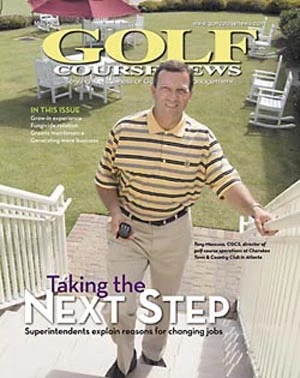
Explore the May 2005 Issue
Check out more from this issue and find your next story to read.
Latest from Golf Course Industry
- The Aquatrols Company adds former superintendent to its R&D team
- Heritage Golf Group expands into Tennessee
- Making the grade — at or near grade
- PBI-Gordon receives local business honor
- Florida's Windsor takes environmental step
- GCSAA names Grassroots Ambassador Leadership Award winners
- Turf & Soil Diagnostics promotes Duane Otto to president
- Reel Turf Techs: Ben Herberger


